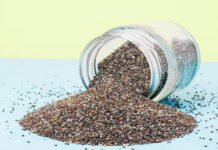
Orthopnea is one of the most common breathing disorders that affects millions of people. Patients suffering from Orthopnea will experience oxygen deficiencies when lying down flat These breathing difficulties occur at night when people are sleeping. Orthopnea is prevalent in people who are morbidly obese or suffering from heart failure.
What is the definition of Orthopnea?
Orthopnea is a breathing disorder that is characterized by a shortness of breath that occurs when a person is lying down flat.
Is Orthopnea a disease?
In the strictest sense of the word, Orthopnea is not a disease, but a symptom of disease, usually heart failure. The word Orthopnea comes from two Greek words: “orthos” and “pnoe”, which translates to “straight” and “breathing”respectively.
Who are the people at most risk?
Orthopnea can occur in people of all ages and gender. Senior citizens with heart related problems as well as obese individuals at among the high risk groups for orthopnea. In case you are looking for a great workout program for losing weight check this out.
Orthopnea can also affects infants and children under the age of 12 and is referred to as paediatric orthopnea. Pregnant mothers have also shown to have symptoms of Orthopnea.
Orthopnea also common in people with the following conditions:
- Asthma
- CODP (chronic obstructive pulmonary disease)
- Chronic Bronchitis
- Pulmonary Edema
- Emphysema
- Pneumonia
- Lung disease
- Congestive heart failure
- Angina Pectoris
Orthopnea is also common in obese individuals with heart problems. In case you are having trouble with weight, these pills can help reduce body fat easily.
What positions can I experience Orthopnea?
Orthopnea is usually experienced at night when lying down in bed. The breathing difficulties can be relieved when a person is sitting up or standing. Orthopnea can only be experienced in 3 positions. The following are the 3 main positions that Orthopnea is applicable:
- Supine Position -In this position, a person is lying down facing upward.
- Left / Right Lateral Recumbent Position -In this position, a person is lying down facing sideways.
- Prone Position -A patient is lying down facing downward.
What are the most common Orthopnea Symptoms?
The main sign that you might be suffering from orthopnea is difficulty in breathing when lying down flat with sensations of tightness around the chest area. Shortness of breath occurs within minutes of laying flat and can be accompanied by uncomfortable coughing and wheezing. Orthopnea In case you are not sure if you are having Orthopnea, apart from shortness in breathing, the typical most common signs and symptoms of Orthopnea include:
- Swollen feet.
- Swollen ankles
- Paroxysmal nocturnaldyspnea(waking up from sleep suddenly due to shortness of breath that goes away when you sit up.)
- Persistent coughing
- Intermittent tightness in the chest region
- Dysphasia
- Angina Pectoris
- Hoarseness of the voice
- Pedal edema
- Cyanosis
- Regular Palpitations
- Need for many pillows when sleeping to elevate the upper body
How is Orthopnea different from Dyspnea?
Dyspnea and Orthopnea are both breathing problems and most patients confuse the two. Dyspnea is a order that causes individuals to experience shortness of breath. Is usually an indicator of an underlying disease like heart failure, scarring of lung tissue or low blood pressure. They experience labored breathing which after strenuous activity or while resting because of having insufficient oxygen in the lungs.
The main difference is that Orthopnea only occurs when lying down but dyspnea can occur in any position. Shortness of breath caused Orthopnea can be temporarily relieved by changing posture but patients with dyspnea can not get such relief.
But what really causes Orthopnea?
Symptoms of Orthopnea are early signs of heart failure. Heart failure in Orthopnea usually results from fluid redistribution into the central circulation, which causes an increase in pulmonary capillary pressure. When lying flat blood volume moves from the lower body to the chest cavity.
In normal cases the blood would be pumped through the entire body, ensuring the blood in the lungs is redistributed as it should. Patients with heart failure have a hard time in pumping the left ventricle because of disease.This causes a significant reduction in vital capacity and pulmonary compliance which ultimately causes shortness of breath.
Patients with congestive heart failure will have an overloaded pulmonary circulation may already be overloaded, and there may be reabsorption of edema fluid from previously dependent parts of the body. When a patient changes the posture to sit or stand, pulmonary congestion decreases and the patient gets temporary relief.
High blood pressure in the lungs is also another main cause of Orthopnea. This problem manifests itself when there is increased pressure in the veins. The amount of oxygen to the heart from the lungs decreases. In the heart, where the right ventricle is pumping more deoxygenated blood compared to the left ventricle oxygenated blood into the aorta in order to circulate blood to the rest of the body. The higher blood pressure moves to the lungs, causing shortness of breath.
Other causes of Orthopnea:
- Panic attacks
- Asthma
- Chronic bronchitis
- Sleep apnea
- Paralysis of one or both breathing diaphragm muscle
- Polycystic liver disease
- Upper respiratory tract Infections – caused by a congested nose and inflamed tonsils.
- Severe pneumonia
What are the various treatment options for orthopnea?
Orthopnea is usually a sign of underlying heart failure but treatment procedures will ultimately depend on the underlying cause. During diagnosis stage patients are asked follow up questions on the number of pillows a patient uses to check progression of the problem. The greater the number of pillows the greater the extent of the problem.
It is important that you side down with your physician and come up with an action plan that will relieve the diseases that cause it. The most common treatment procedure for Orthopnea include the following:
- Anti-inflammatory medication
- Pericardiocentesis
- Open heart surgery.
Other types of treatment for orthopnea include:
Vasodilators which help increase the width of the veins. They work to relieve pressure in the lungs by increasing the flow of blood in the veins.
Diuretics (water pills) are also administered to reduce the amount of bodily fluid in the lungs. A sodium and salt free diet is recommended for managing the condition. Patients are encouraged to reduce weight in case they are obese and reduce intake of foods rich in sodium.
Inotropic therapy is used for treating heart failure are prescribed in helping the heart (left ventricle) pump more blood to the body. Angiotensin-converting enzyme (ACE) inhibitors help with left-sided heart failure by improving blood flow.













































